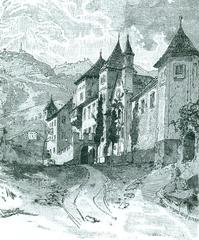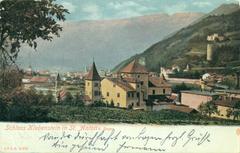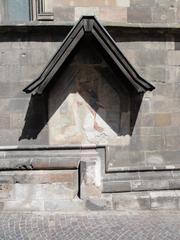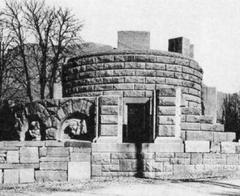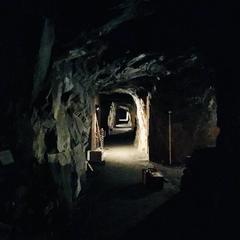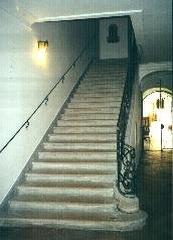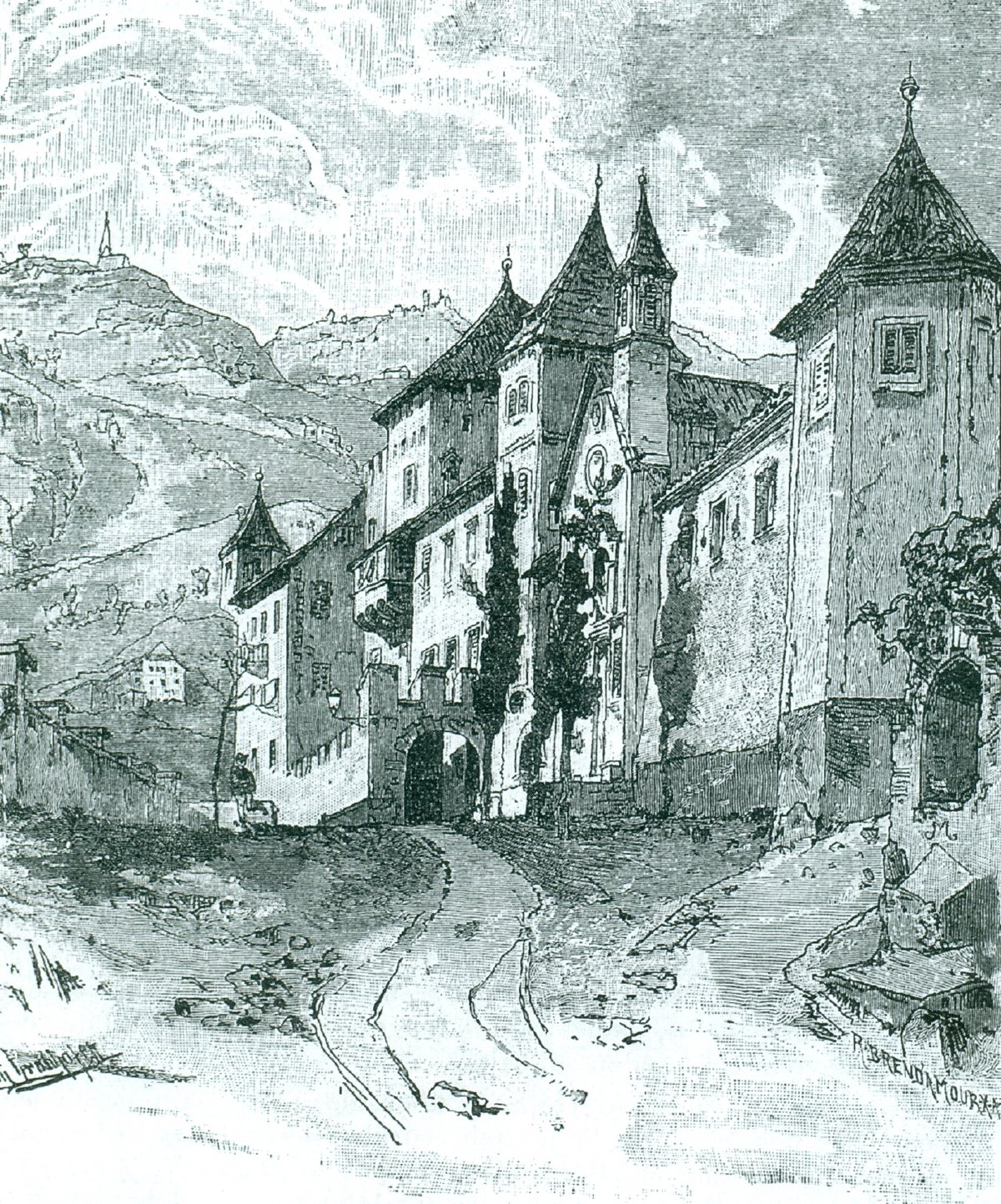
Klebenstein Castel Sant Antonio: Visiting Hours, Tickets, and Historical Sites in Bolzano, Italy
Date: 15/06/2025
Introduction
At the northern edge of Bolzano, Italy, Klebenstein Castle—also known as Castel Sant’Antonio or Schloss Klebenstein—stands as a remarkable testament to South Tyrol’s layered history and multicultural identity. With roots tracing back to the 13th century, this medieval fortress has witnessed centuries of change, from its inception as a strategic residential tower to its later transformation into a noble estate. While the castle remains privately owned and is not open for interior tours, its striking exterior, perched above the Talvera River and surrounded by vineyards, continues to captivate visitors who walk or cycle along Bolzano’s scenic trails.
Bolzano itself is a vibrant city where Italian and Germanic cultures intersect, reflected in its bilingual traditions, architecture, and lively events. Klebenstein Castle epitomizes this blend, serving as both a historical landmark and a symbol of the region’s cultural coexistence. This guide provides a detailed overview of Klebenstein Castle’s history, practical visitor information, and highlights of Bolzano’s other notable historical sites.
For comprehensive background and up-to-date visitor details, refer to Weinstrasse.com, Bolzano-Bozen Tourism, and Wanderlog.
Contents
- Introduction
- Historical Background and Architectural Evolution
- Cultural Significance and Multicultural Heritage
- Visiting Klebenstein Castle: Hours, Tickets, and Access
- How to Get There: Transportation and Parking
- Visitor Experience and Nearby Attractions
- Practical Tips for Travelers
- Frequently Asked Questions (FAQ)
- Visual Highlights and Media
- Conclusion
- Sources
Historical Background and Architectural Evolution
Medieval Foundations
Klebenstein Castle’s origin dates to the 13th century, when the Karnol residential tower was erected to guard vital trade routes near a Talvera River bridge. Its strategic location made it a key checkpoint for merchants and travelers entering Bolzano (weinstrasse.com). Its initial structure, typical of Tyrolean “Ansitze,” featured thick stone walls and small openings for defense against both siege and harsh Alpine weather.
Expansion and Transformation
Between the 14th and 16th centuries, the estate expanded beyond its single tower, acquiring residential wings and auxiliary buildings that reflected the increasing wealth and status of its noble owners. The castle’s name, “Klebenstein,” derives from a prominent family who owned it during this period. By the Renaissance, the estate displayed more comfort and private worship spaces, such as the chapel dedicated to St. Anthony (weinstrasse.com).
Later Architectural Modifications
In the late 19th and early 20th centuries, Klebenstein underwent romantic historicist remodeling, with new ring walls, arrow slits, a second tower, and a crenellated gate complex. These changes enhanced its picturesque, castle-like appearance, marking its transition from fortress to a symbol of leisure and nobility (weinstrasse.com).
Cultural Significance and Multicultural Heritage
Klebenstein Castle reflects Bolzano’s history as a crossroads between northern and southern Europe. Its architectural layers tell the story of shifting power and cultural influences—from Tyrolean medieval origins to Renaissance expansions and later romantic adaptations. Bolzano’s officially bilingual culture is evident in the castle’s dual naming (Italian and German), and in the city’s traditions, festivals, and cuisine (bolzano-bozen.it).
The castle is part of a dense network of medieval fortifications, including Runkelstein and Maretsch Castles, each serving as both noble residence and military stronghold. Together, these sites embody the region’s complex heritage and the ongoing coexistence of Italian and Germanic cultures (wanderlog.com).
Visiting Klebenstein Castle: Hours, Tickets, and Access
Visiting Hours and Tickets
Klebenstein Castle is privately owned and not open to the public for interior visits. There are no set visiting hours or ticketing system. Visitors can view and photograph the castle’s exterior year-round from public walking and cycling paths such as the Wassermauer-Promenade and Talferwiesen (weinstrasse.com).
For those seeking castle interiors and exhibitions, nearby Runkelstein Castle (Castel Roncolo) offers ticketed guided tours of its famous medieval frescoes (oncastles.com), and Maretsch Castle provides access to cultural events and exhibitions.
Accessibility
The paths leading to Klebenstein Castle are generally paved but may include uneven terrain and inclines. They are suitable for most visitors with moderate mobility; comfortable shoes are recommended. Due to the private status of the castle, interior access is not available.
How to Get There: Transportation and Parking
- On Foot: Klebenstein Castle is approximately a 30–45 minute walk from Bolzano’s city center along scenic routes.
- By Bike: Bolzano’s extensive cycling network offers easy access; bikes can be rented in the city for a 15–20 minute ride.
- Public Transport: Local buses connect the city with the Sarentino Valley and the Talvera River area. Check current schedules on Bolzano’s public transit website.
- By Car: Parking is limited near the castle due to pedestrian zones; visitors are encouraged to park in central Bolzano and proceed by foot or bike.
Visitor Experience and Nearby Attractions
What to Expect
- Scenic Views: Enjoy panoramic vistas of vineyards, the Talvera River, and the Dolomites, with the castle’s medieval towers providing a dramatic focal point.
- Photography: The exterior is best photographed during early morning or late afternoon light.
- Walking and Hiking: Klebenstein is a highlight on longer routes connecting to Runkelstein Castle, Maretsch Castle, and Bolzano’s parks.
Nearby Attractions
- Runkelstein Castle (Castel Roncolo): Renowned for its medieval frescoes and guided tours (Trek Zone).
- Maretsch Castle: A Renaissance-era estate hosting exhibitions and events.
- South Tyrol Museum of Archaeology: Home to Ötzi the Iceman (Pragmatic Travelers).
- Talvera Promenade: Popular riverside trail for walking and cycling.
Practical Tips for Travelers
- Language: Italian and German are both widely spoken; English is common in tourist areas. Signage is bilingual (The Roaming Renegades).
- Cuisine: Sample local dishes such as speck, knödel, and apple strudel at nearby cafés and wine bars.
- Weather: May–October provides the best conditions for outdoor activities, but carry a rain jacket for sudden showers.
- Accessibility: Some paths may not be fully wheelchair accessible due to terrain; inquire locally for details.
- Sustainability: Use public transport and respect local conservation efforts (The Roaming Renegades).
- Etiquette: Greet locals in either Italian or German; respect private property and avoid climbing on the castle’s structures.
Frequently Asked Questions (FAQ)
Is Klebenstein Castle open to the public?
No, the castle is privately owned; only the exterior can be viewed from public paths.
Are guided tours available?
Not at Klebenstein, but Runkelstein and Maretsch Castles offer guided tours.
What are the visiting hours and ticket prices?
There are no official hours or tickets for Klebenstein’s exterior. Runkelstein Castle charges around €7 for adults.
How do I get to Klebenstein from Bolzano’s center?
Walking and cycling are recommended; public transport is available to nearby stops.
Is the site accessible for people with disabilities?
Some areas may be challenging due to uneven terrain. Contact the local tourist office for advice.
Visual Highlights and Media
For additional images and virtual tours, visit official tourism resources or Bolzano-Bozen Tourism.
Conclusion
Klebenstein Castle, while modest and privately owned, remains a striking symbol of Bolzano’s medieval heritage and multicultural spirit. Its picturesque location and fascinating architectural evolution offer a rewarding stop for history enthusiasts and travelers exploring South Tyrol. Combine your visit with neighboring castles and cultural sites for a deeper appreciation of this unique region.
For the latest updates, download the Audiala app, consult official tourism sites, and explore our related guides on Bolzano’s best historical routes and festivals.
Sources and Further Reading
- Exploring Schloss Klebenstein: History, Architecture, and Visitor Information for Bolzano Historical Sites, 2024, Weinstrasse.com (https://www.weinstrasse.com/de/highlights/burgen-schloesser/schloss-klebenstein/)
- Visiting Klebenstein Castle in Bolzano: History, Tickets, and Travel Tips, 2024, Wanderlog (https://wanderlog.com/list/geoCategory/115613/best-castles-in-and-around-bolzano)
- Practical Visitor Information and Experience, 2024, Trek Zone & The Roaming Renegades (https://trek.zone/en/italy/places/227273/runkelstein-castle-bolzano), (https://theroamingrenegades.com/bolzano-italy-guide-dolomites/)
- Klebenstein Castle Visiting Hours and Bolzano Historical Sites Guide, 2024, Bolzano-Bozen Tourism & Following the Rivera (https://www.bolzano-bozen.it/en/), (https://www.followingtherivera.com/top-rated-things-to-do-in-bolzano-italy/)
